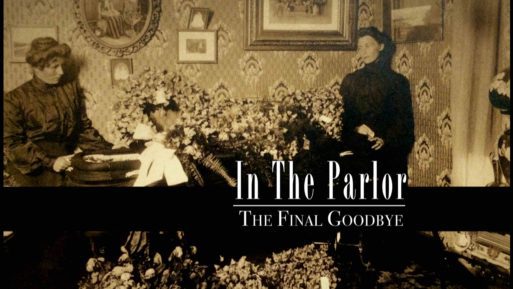 I had the amazing good fortune to experience true magic recently when I drove from San Francisco to Sacramento. The storms actually parted as the sun streamed through. That evening an audience gathered for the debut of an unusual documentary film “In the Parlor, The Final Goodbye.” It explores a new movement many are not aware of — family-directed funerals — where families have a funeral at home with the body present. Filmed on a tight budget, this film is a cultural game changer.
I had the amazing good fortune to experience true magic recently when I drove from San Francisco to Sacramento. The storms actually parted as the sun streamed through. That evening an audience gathered for the debut of an unusual documentary film “In the Parlor, The Final Goodbye.” It explores a new movement many are not aware of — family-directed funerals — where families have a funeral at home with the body present. Filmed on a tight budget, this film is a cultural game changer.
The film, by co-directors and producers Heidi Boucher and Ruby Sketchily, follows the family-directed funerals of three different individuals. It immerses the audience so intensely that it allows us to be intimately present with the families. We witness as they grieve, wash the body, make honoring mementos, tell stories, laugh, cry and kiss their loved ones goodbye.
The idea of a family-directed funeral is not new to me. Yet the profound experiences witnessed in this film are without question a view into how we will let go of our loved ones in the future. The film makes natural death care fully transparent, especially for those who are new to the idea. It captures the beauty of a most loving process of saying goodbye to our loved ones. We feel deeply for Julie, who is terminally ill, as she talks calmly about her impending death. Our hearts throb as Jarred’s father emotionally tells the story of his son’s motorcycle accident that killed him on their own driveway. We watch as the proud children of Ronald, founder of the Renaissance Fair, share a lifetime of stories of their unusual father. It’s astounding how each of these families opens their hearts and their homes to let us in so close.
On a pragmatic level, this film tackles many of the questions people typically have about a home funeral. Questions such as, “Will it smell?” “Can we do this?” and “Will the neighbors think we’re weird?” I won’t spoil it by answering.
As the film progresses, we begin to see how special a home funeral funeral is, as we watch families in their most intimate moments. Slowly, we begin to realize that the film does more than teach us what a family-directed funeral or natural death care is and why it is growing in popularity. It also begins to make us question the need for funeral directors and funeral homes. Especially since many people are rejecting the idea of embalming, and families have a legal right to file their own death certificates. Funeral homes and funeral directors are starting to become superfluous. As Julie’s sister says in the film, “Only people who love her and respect her will touch her body.”
I suspect that without the directors intending it, “In the Parlor, The Final Goodbye” is a tongue-in-cheek title. By the end of the film, it’s easy to believe that this movement will grow to become “the final goodbye” for the traditional funeral [home] parlor. The film is a cultural game changer of the highest caliber. We will take our dead back home again and own our personal experiences with death as we did back in the 1800s.
And as to the magic I experienced that night in a packed Sacramento theater? It was the realization that this was more than a documentary screening: It was a film filled with love. Towards the end of the question-and-answer period, in a moment of silence one of the family members from the film softly commented, “Can you feel the connection right now?” The theater went silent again as everyone bathed in a vast space of emotions. And it is these feelings that will be the final demise of the funeral industry.
ITPTrailer from david sketchley on Vimeo.

 “In the Parlor, The Final Goodbye” by Heidi Boucher and Ruby Sketchily
“In the Parlor, The Final Goodbye” by Heidi Boucher and Ruby Sketchily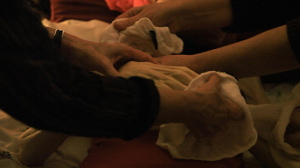
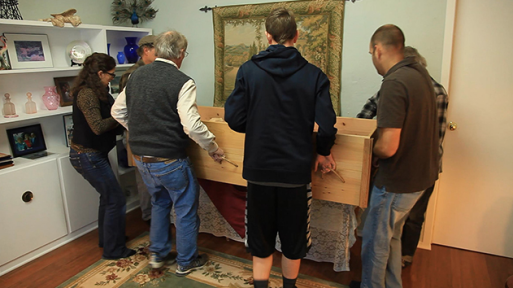
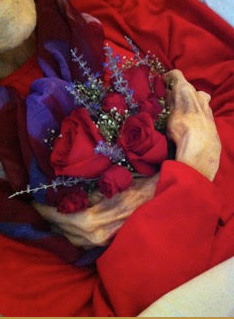
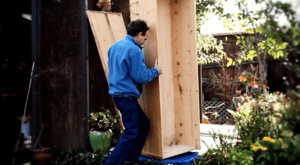



 How Dare You Die Now!
How Dare You Die Now!
 Debating Medical Aid in Dying
Debating Medical Aid in Dying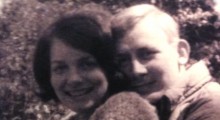
 “Help Me, Helen”
“Help Me, Helen”














